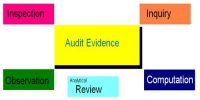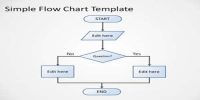Audit working papers are used to document the information gathered during an audit. These working papers provide evidence that sufficient information was obtained by an auditor to support his or her opinion regarding the underlying financial statements. They should contain sufficient information for an auditor who did not work on an audit to discern the reasons for the opinion given regarding a client’s financial statements.
The forms of documentation that may be contained within the working papers include the following:
- Checklists of standard investigation items that were completed, and by whom
- Copies of correspondence
- Documentation of the assertions investigated and supporting evidence found
- Extracts from the corporate minutes of the client
- Flowcharts of a client’s key transaction processes
- Narrative discussions of issues found
- Organization charts
- Questionnaires for which the client provided answers
In addition, there may be extensive cross-referencing between the documents contained within the working papers.
Audit working papers are prepared by the audit staff and audit seniors, and are reviewed by audit senior managers and partners. If a reviewer finds that any issues have not yet been addressed, then these issues are delegated to the on-site audit team for action. Reviewers sign and date each page examined. Once an audit has been concluded, the audit working papers are considered legal evidence, and so are appropriately indexed and filed. At a minimum, the working papers will likely be reviewed the next year by the assigned audit senior or manager, who will want to understand any issues found in the prior year, and also to determine if there are any ways to budget the audit staff’s time more effectively.
Several software providers sell off-the-shelf software that creates electronic versions of working papers, so that auditors are not as burdened by the volume of paperwork commonly found in a traditional audit.















